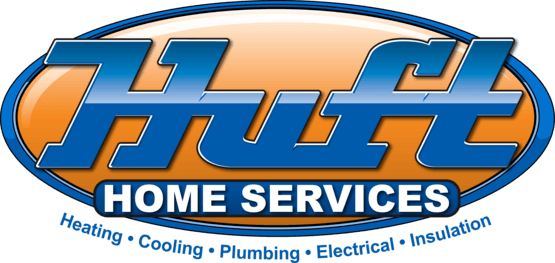Looking for and preventing costly plumbing issues should be a top priority when buying a home. The more time you take to carefully examine the plumbing system, the easier it becomes to identify potential problems before they escalate. This is essential for avoiding unexpected repair costs and ensuring the long-term functionality of the home’s plumbing infrastructure. If you pinpoint certain plumbing problems, you might even be able to get the home for a cheaper price.
1. Leaks in Pipes and Fixtures
Look for visible signs of leaks in the pipes and fixtures, such as water stains, moist areas or mold development. Leaks often occur in the areas surrounding fixtures like sinks, toilets and beneath cabinets, so be sure to give those areas your full attention. Rust and corrosion on metal pipes are common symptoms of a possible leak, so it’s important to look for them as well during a comprehensive inspection. Small leaks, if left unchecked, can eventually cause major water waste and even structural damage. Immediate action is usually necessary to resolve identified leaks and avoid additional complications.
2. Water Pressure Issues
There may be deeper issues with the plumbing system if the water pressure is inconsistent or low. Go around the house and check the water pressure in all the taps, showers and appliances to make sure it stays steady. When doing this, bring a friend to help you check them all at once to ensure proper pressure, and if there’s a problem, call a plumber to find out why. Problems with the pressure regulator, silt accumulation or blockages can all lead to low water pressure. Sudden changes in pressure could be a sign of a more serious problem, including clogged pipes or other plumbing obstructions.
3. Signs of Previous Water Damage
A history of water damage may indicate unresolved or neglected plumbing issues. Keep an eye out for stains on the walls, ceilings and floors—these are telltale indications of water damage. These spots can help you determine whether the property has had major water problems. Warped or swollen timber, peeling paint and mold growth are other red flags to look for. Finding the source of the problem is key to understanding how much it will cost to fix. Extensive water damage may indicate you need to look for a different home to buy.
4. Corroded or Rusted Pipes
Corroded or rusted pipes can cause leaks, reduced water flow and even pipe failure. Discolored or flaky surfaces are common indicators of rust and corrosion, so be sure to check any exposed pipes for these damages. When corrosion erodes pipes, the likelihood of leaks and water damage increases. Rust and corrosion are a major problem for older pipelines constructed of materials like galvanized steel. In order for the plumbing system to work safely and efficiently, you must replace or fix corroded pipes.
5. Blocked or Slow Drains
Water backups and possible fixture damage can result from clogged or sluggish drains. Before you buy the home, turn on all of the sinks, showers and bathtubs to be sure the drains and faucets work correctly. A clog or broken pipe can cause a drain to be slow or clogged. The need for a plumber may become apparent if drainage difficulties persist over an extended period of time. The proper functioning of the plumbing system and the avoidance of water damage depend on the drainage system. If you take care of clogged or slow drains right away, you can save yourself a lot of trouble later on.
6. Old or Outdated Plumbing Systems
Plumbing systems older than a few decades may be unsafe and have many issues. Consider the pipes, fixtures and fittings’ age and condition when making your assessment. Significant upgrades may be necessary for older systems that use materials like lead pipes. This is because older, less efficient plumbing systems leak and malfunction more often. Upgrading to more contemporary plumbing fixtures can increase efficiency and decrease the likelihood of future issues.
7. Functional Issues with Water Heater
Before you assume the water heater works properly, inspect it for leaks, rust and strange noises. Because of the increased likelihood of problems with older water heaters, it’s important to evaluate the unit’s age and maintenance history. When a water heater breaks down, it can lead to an increase in energy expenses and an unpredictable supply of hot water. Make sure there’s enough hot water coming out of the water heater when testing it and that it’s working efficiently. Fixing problems with water heaters can save hassle and ensure that the appliance is always ready for use.
8. Improperly Installed or Faulty Sump Pumps
When it comes to controlling groundwater and avoiding basement flooding, sump pumps are indispensable. If the home you’re thinking about buying comes with a sump pump, make sure it’s in the right place and running well. Keep an eye out for things like excessive wear and tear, strange noises or poor drainage, all of which could mean trouble. Water might pool around the home’s base if the sump pump isn’t working properly, which can cause major damage to the foundation.
9. Presence of Hard Water Deposits
Appliances and plumbing fixtures may not work as well or last as long if hard water deposits are present. For signs of hard water, check for mineral deposits in fixtures including faucets, showerheads and appliances. Limescale, a type of hard water deposit, can reduce water efficiency and flow. This accumulation also results in damage to fixtures and more frequent maintenance visits. Installing water softeners or maintaining a regular cleaning schedule are two potential solutions to hard water problems.
10. Abnormal Water Tastes or Odors
If you notice any odd tastes or odors in the water, it could be a sign that there’s an issue with the water supply or the pipes. Contamination, stagnant water or corrosion in the pipes can cause water to smell or taste strange. To guarantee safety and handle possible problems quickly, water quality assessments are crucial. When water isn’t fit for human consumption or other everyday uses, it can have dangerous effects on your health. You can easily schedule a water quality assessment when deciding whether to buy a home.
11. Frozen or Buried Pipes
During cold weather, underground or frozen pipelines have the potential to explode, leading to substantial damage. This is why you must verify that any exposed pipes have enough insulation and are not at risk of freezing. Keep an ear out for strange noises or erratic water flow as warning indications of possible freezing. You can avoid expensive repairs and water damage by making sure the pipes are adequately insulated before you buy the home. This is especially important for homes in areas that frequently experience freezing temperatures.
Huft Home Services can answer any questions you might have about plumbing when buying a home. We also offer HVAC installations, electrical wiring, indoor air quality testing, insulation services, indoor/outdoor lighting and much more. If you’re buying a home, call us to schedule a plumbing inspection in Yuba City, CA. From water heaters to drain cleaning, we do it all.




